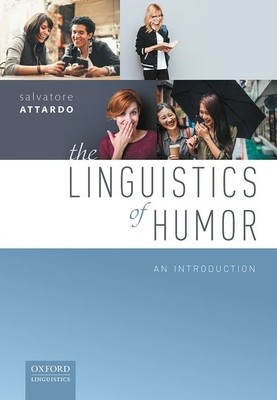
- We will send in 10–14 business days.
- Author: Salvatore Attardo
- Publisher: Oxford University Press, USA
- ISBN-10: 0198791275
- ISBN-13: 9780198791270
- Format: 16.8 x 24.1 x 3.6 cm, hardcover
- Language: English
- SAVE -10% with code: EXTRA
Reviews
Description
This book is the first comprehensive and systematic introduction to the linguistics of humor. Salvatore Attardo takes a broad approach to the topic, exploring not only theoretical linguistic analyses, but also pragmatic and semantic aspects, conversation and discourse analysis, ethnomethodology, and interactionist and variationist sociolinguistics. The volume begins with chapters that introduce the terminology and conceptual and methodological apparatus, as well as outlining the major theories in the field and examining incongruity and resolution and the semiotics of humor. The second part of the book explores humor competence, with chapters that cover semantic and pragmatic topics, the General Theory of Verbal Humor, and puns and their interpretation. The third part provides an in-depth discussion of the applied linguistics of humor, and examines social context, discourse and conversation analysis, and sociolinguistic aspects. In the final part of the book, the discussion is
extended beyond the central field of linguistics, with chapters discussing humor in literature, in translation, and in the classroom.
EXTRA 10 % discount with code: EXTRA
The promotion ends in 17d.00:32:04
The discount code is valid when purchasing from 10 €. Discounts do not stack.
- Author: Salvatore Attardo
- Publisher: Oxford University Press, USA
- ISBN-10: 0198791275
- ISBN-13: 9780198791270
- Format: 16.8 x 24.1 x 3.6 cm, hardcover
- Language: English English
This book is the first comprehensive and systematic introduction to the linguistics of humor. Salvatore Attardo takes a broad approach to the topic, exploring not only theoretical linguistic analyses, but also pragmatic and semantic aspects, conversation and discourse analysis, ethnomethodology, and interactionist and variationist sociolinguistics. The volume begins with chapters that introduce the terminology and conceptual and methodological apparatus, as well as outlining the major theories in the field and examining incongruity and resolution and the semiotics of humor. The second part of the book explores humor competence, with chapters that cover semantic and pragmatic topics, the General Theory of Verbal Humor, and puns and their interpretation. The third part provides an in-depth discussion of the applied linguistics of humor, and examines social context, discourse and conversation analysis, and sociolinguistic aspects. In the final part of the book, the discussion is
extended beyond the central field of linguistics, with chapters discussing humor in literature, in translation, and in the classroom.


Reviews